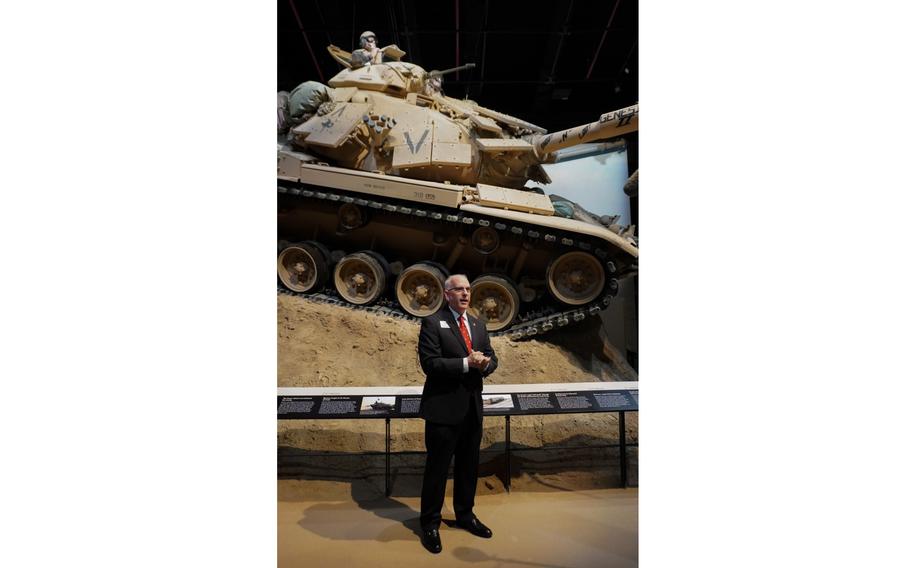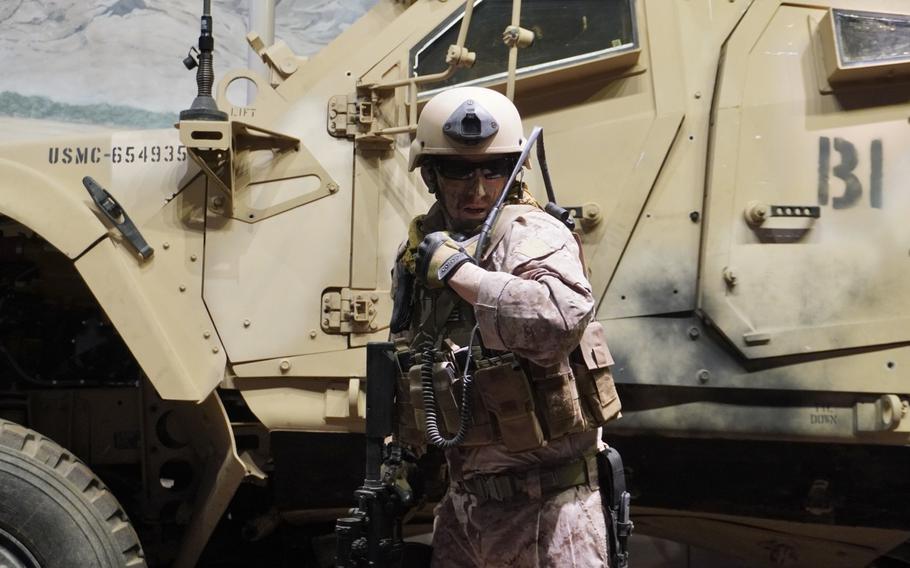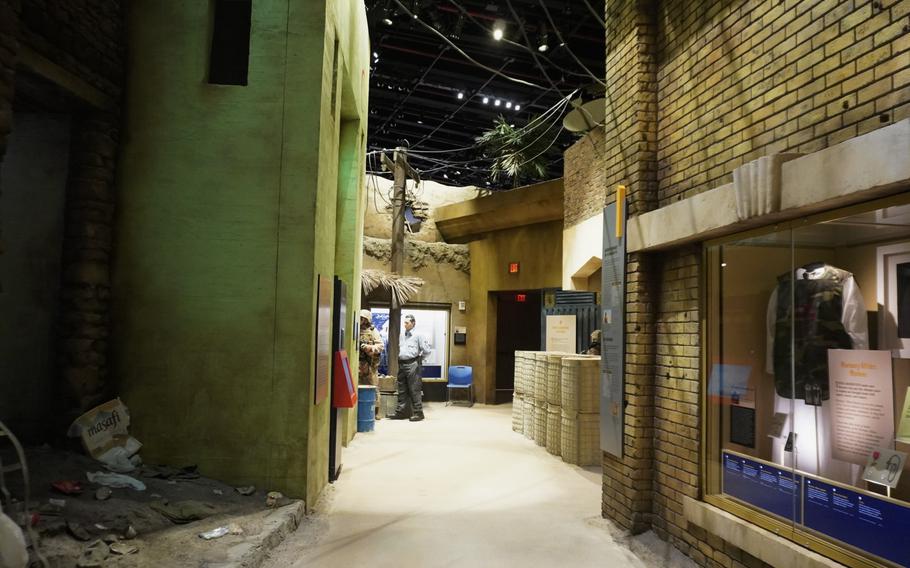For 13 years, the National Museum of the Marine Corps has been working on its two new galleries: “Forward Deployed” and “Afghanistan and Iraq.”
The museum will finally open these galleries to the public on Sunday at 9:30 a.m. in Triangle, Va., and share with visitors around the world history from the last half century of Marines.
“The one thing we strove for,” said museum exhibits branch chief Chuck Girbovan, “was to make Marines real humans.”
The galleries — 20,000 square feet combined — cover 50 years of Marine Corps history from the end of the Vietnam War to present day. The galleries tell stories of Marines in combat operations, humanitarian operations and global deployments using hundreds of artifacts and immersive experiences.
The Marine Corps has its own lore and legacy and with these galleries the NMMC wants to show Marines on the front lines.
“If you’ve ever been to the National Museum of the Marine Corps, you’re going to see something even more exciting,” said David Vickers, deputy director of NMMC.
Visitors will see artifacts and exhibits including: a Marine Corps helicopter tail boom that was shot down during the invasion of Grenada; the M198 howitzer, “Damn Yankee,” that fired the first shot in Desert Storm; the M60A1 tank “Genesis II,” which was one of the first ground vehicles to breach the Iraqi defenses into Kuwait during Desert Storm; an F/A-18 Hornet fighter jet that flew patrols over Washington, D.C., right after 9/11; an M-ATV vehicle that was hit by an improvised explosive device (IED) in Afghanistan; and much more.

National Museum of the Marine Corps Deputy Director David Vickers speaks to the news media in front of the M60A1 tank “Genesis II” on Sept. 18, 2024. “Genesis II” was one of the first ground vehicles to breach the Iraqi defenses into Kuwait during Desert Storm and is on display in one of the museum’s newest galleries “Forward Deployed” at the museum. (Kaylyn Barnhart/Stars and Stripes)
The opening of the galleries completes a 13-year long journey of researching, collecting photographs and having in-depth conversations with Marine veterans who provided details about their experiences.
The museum’s staff thought it was important for these galleries to share oral histories with visitors and accurately represent the environments Marines experienced. One way this was accomplished was by replicating cast figures from actual Marines who were in the areas represented in the galleries.
“The information that we have in the museum and the artifacts are very interesting on their own,” Girbovan said. “But we feel it’s very important to put them into context.”
Many Marine veterans worked with the museum to re-create specific scenes to help depict actual events. There is a life cast of retired Maj. David McGrath featured in “Afghanistan and Iraq” next to the M-ATV vehicle that was hit by an IED in Afghanistan. McGrath, who was there, helped bring the scene to life with his descriptions from that day and with his life cast placed at the scene.

A life cast of retired Maj. David McGrath positioned next to an M-ATV vehicle damaged by an IED in Afghanistan. McGrath was there when the explosive device struck the vehicle. (Kaylyn Barnhart/Stars and Stripes)
“This [depiction] is pretty accurate,” McGrath said. “Except it’s not as violent as it was in reality.”
Unlike other exhibits, the new galleries incorporate more advanced technologies. In “Afghanistan and Iraq,” there is a re-creation of an Iraqi street depicting scents, sounds and scenes to stimulate the combat environment. Veterans who may be sensitive to this experience have the option to bypass the exhibit.
“As difficult as that might be for a Marine to walk through the gallery, they would not be happy with us if we watered it down because they want their story told in a realistic manner,” Girbovan said. “We feel we have a responsibility to the Marines who served to be honest.”

An immersive walk through an Iraqi street recreated in one of the new galleries, “Afghanistan and Iraq” at the National Museum of the Marine Corps on Sept. 18, 2024. This exhibit depicts scents, sounds and scenes to stimulate the combat environment. (Kaylyn Barnhart/Stars and Stripes)
Aside from preserving the last 50 years of Marine Corps history, these galleries also serve to pay tribute to Marines who have died in combat operations during that time.
“These exhibits give visitors an immersive look into the experiences of Marines over the last 50 years, and we hope they inspire an appreciation for the brave men and women who have faithfully served our nation,” said retired Maj. Gen. James Lukeman, president and CEO of the Marine Corps Heritage Foundation.